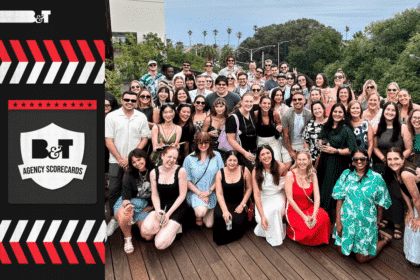In this post, VertaMedia co-founder Alex Bornyakov explores the things that will shape digital video advertising in the coning 12 months. This article originally appeared on Forbes.com
Please note this article is written in the context of the US advertising market…
Digital video advertising is a hot topic that’s about to reach its boiling point. No doubt driven by increasing consumption and Cisco’s much-quoted prediction that over 80 per cen tof internet traffic will be video by 2020, interest in digital video advertising is soaring and online video ad spend is expected to grow 31 per cent next year.
But the video advertising landscape isn’t simply expanding, it is also advancing and evolving. After years of experience working in the industry, I am keenly aware that technological developments, new formats and emerging platforms are continually adjusting its direction. So what are the key trends that will dominate video advertising as we head into 2017?
The Future Of Video Advertising Is Social
Video ad spend on social networks is escalating for one simple reason: Social media is where the consumers are. Thepresidential election illustrated the extent to which we – rightly or wrongly – rely on social networks for news and information and a large proportion of the content consumed on these platforms is in video form. Social video ads are particularly popular among marketers looking to expand brand awareness, as video is a highly engaging format that creates an emotional connection with the viewer and is frequently shared.
Facebook – which receives over two-thirds of global social network ad revenue – is the major player here, but other networks are increasing their offering. Twitter recently opened up its ad program to allow content creators to monetize their videos with pre-roll content and Pinterest has launched promoted videos. Social video will continue to grow over the coming year with ad formats expanding to include native video and in-the-moment live stream ads using services such as Facebook Live.
Mobile Will Create More Opportunities
Mobile video is one of the fastest-growing ad formats – with almost a quarter of digital ad budgets already allocated to it – but its potential is only just beginning to be explored. Google has just introduced native video ads for mobile publishers to make mobile formats faster and more effective, and in 2017, further technological advances will allow mobile video advertising to become more engaging and creative. Advertisers will focus on building native, shareable experiences, and mobile video advertising will become increasingly affordable, making it more attractive to smaller businesses.
Brands Will Communicate Via Video
Email newsletters continue to play a major role in marketing strategies; embedding video into these emails will become increasingly popular next year as brands seek to maximize their effectiveness. Newsletters with embedded videos have high open and click-through rates, and videos can be used to build consumer relationships through creative brand storytelling.
Virtual Reality And Augmented Reality Will Become Mainstream
The phenomenal success of Pokémon Go shows users are ready for augmented reality experiences, and products such as Google Cardboard and Daydream are making virtual reality far more accessible, so video advertising will become increasingly experiential over the coming months. YouTube already offers 360-degree video ads, with BMW and AT&Ttaking advantage of the format. Sony became the first brand to trial Snapchat’s 360-degree offering with an immersive video ad for its movie Don’t Breathe. By the end of 2017, this emerging technology will be considered the norm.
Video Ad Lengths Will Vary By Platform
The spotlight has been on shorter videos over the past couple of years and, with YouTube launching six-second bumper video ads, the focus has been on reducing ad lengths. But with the demise of the original micro-video platform Vine, the industry has taken a fresh look at how videos of different lengths perform.
Facebook’s success with video is often attributed to the fact it runs shorter ads, but video completion rates on the platform are actually highest for those in the 30-60 second range. In 2017, advertisers will need to avoid a one-size-fits-all policy, gauging ad length by platform audience. They will also need to consider what they hope to achieve with the video ad. Do they want to inform or entertain? Are they introducing a new product or reminding consumers of an established brand? These factors will all impact ad length.
Read the full article here.








